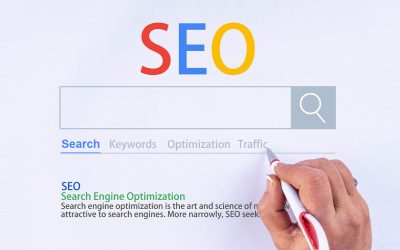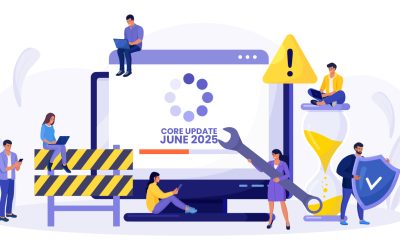Technical SEO is an important part of healthcare digital marketing just as for marketing in any other business sector. It refers to the process of optimizing the features of a website apart from on page content. It improves crawling and lays a strong foundation for the content to rank higher. For websites to appear on the first page of search engine results page, technical SEO is important. SEO strategies keep changing to provide quality results to the user. As we advance into 2019, new approaches to SEO become necessary to meet new requirements and search engine algorithms. With 5000 advanced devices integrated with Google Assistant and voice search, focal points of searches have become distributed and the traditional SERP has lost most of its significance.
Technical SEO Over the Years
- In the early 2000s, technical SEO and web development were closely aligned and the focus was on ensuring that the website’s code was crawlable and indexable.
- Black hat techniques such as keyword stuffing and link building were used for improving SEO performance; but by late 2000s black hat techniques began to be penalized by Google, and digital marketers needed new strategies to deliver results.
- With the Panda and Penguin updates, all black hat techniques were terminated and it even raised the question whether SEO was dead.
- By 2010, Google began penalizing thin or low quality content. Now SEO was focused on delivering great site experiences and creativity was given more importance.
- By 2015 – 2016, the idea of SERP changed completely and content discovery was split across multiple devices and platforms.
- In the year 2017, use of mobiles with voice search and digital assistants’ usage started increasing phenomenally and the need for mobile optimized websites also increased.
- Now, the Internet of Things has become very significant with increasing number of connected devices. The SEO challenge now is to optimize for everything everywhere.
So, what should be the new approach to stay competitive? The margins of SEO need to be widened to accommodate creative content as well, which had not been technically a part of technical SEO.
Four Key Areas of Technical SEO
To meet present and future demands, technical SEO must embrace all search engine best practices to drive website performance as well as crawlability. There are four important areas to focus on, as Andy Betts points out in his post on searchenginejournal.com.
- Structure: The website must be structured with a site hierarchy and URL structure that would enable search engines as well as users to find their way to relevant content. The ideal structure should also allow easy flow of internal link equity (passing authority and value from one page to another) throughout the site.
- Conversion: A crucial part of technical SEO is identifying obstructions along the path of users from moving around your website and resolving them to improve conversions.
- Website content: It is important to ensure that the content can be crawled and indexed by all major search engines. Log file analysis can be made use of to understand their access patterns and structured data so that efficient access is provided to content.
- Performance: The performance of the website depends on the above mentioned key aspects. Once those are attended to, you can expect excellent performance.
Things to Note
Structuring an SEO-friendly website architecture is a very important element of technical SEO. For this, important considerations include robot.txt file, a clear and consistent URL structure, a sitemap, and secure browsing, as Adam Tanguay says in a unamo.com blog.
- Google favors the secure protocol HTTPS rather than HTTP. Apart from increasing your website’s ranking, the HTTPS protocol ensures that the referrer details can be viewed in Google Analytics. Websites with the HTTPS protocol will have the referrer data included under “Direct” traffic source. Without the security protocol, it is not possible to identify the source of the traffic.
- To ensure easy user navigation, a “breadcrumb trail” is advised. Metaphorically, this refers to breadcrumbs left along the way to enable users to find their way around the website. Breadcrumbs clearly present the website hierarchy and signify where the visitor currently is. Moreover, breadcrumbs also minimize the number of actions visitors have to take if they need to return to the home page, to a different section, or to a higher level page. This type of navigation is beneficial for e-commerce websites that offer numerous different products. It is a secondary navigation scheme and is ideally used as an extra addition to the website. Experts advise that it shouldn’t replace primary navigation.
- A user-friendly URL should be an important consideration of technical SEO. It should describe the page to both users and search engines, and ideally optimized URLs act as a good ranking factor. Adding a keyword targeted by a given page, separating the words in your URL with hyphens, and minimizing the number of words in your URLs are good strategies.
- A good sitemap and the robot.txt file (or the robots exclusion protocol or standard that tells search engine robots how to crawl the pages on your site) are other important considerations. The robots.txt file must be placed in your website’s top-level directory to ensure it is found. Similarly, XML sitemaps enable search engines to crawl and index a website effectively. Inserting it into the robots.txt file allows search engines to be notified of it. Sitemaps improve the ranking of your website and enhance your SEO efforts.
Rich snippets or structured data comprise another important element of technical SEO. Adding this structured data mark-up to your existing HTML is a sure way of enabling search engines to better understand what information is contained on each web page. When this mark-up is inserted directly in your website, Google displays it as rich snippets.
In Conclusion
With Accelerated Mobile Pages (AMP) and Progressive Web Apps (PWAs) gaining importance, just as other businesses medical brands must ensure that their web presence meets the highest standards to keep up with the pace ofpresent day consumers. Thinking beyond search engines has become necessary, and new ways have to be identified so that the content can be discovered by targeted users. A different approach to SEO is necessary if we are to tap into the full potential of emerging consumer trends. The approach should include site experience optimization as well as conventional SEO techniques. SEOs need to focus on where and how they apply their technical knowledge. SEO efforts should be towards optimizing the website for mobile and desktop devices. Mobile apps, voice search, and artificial intelligence must also be given due consideration.




